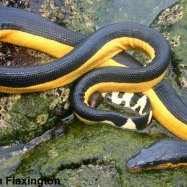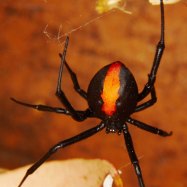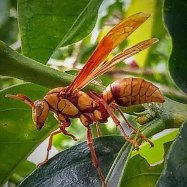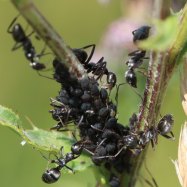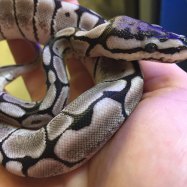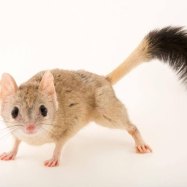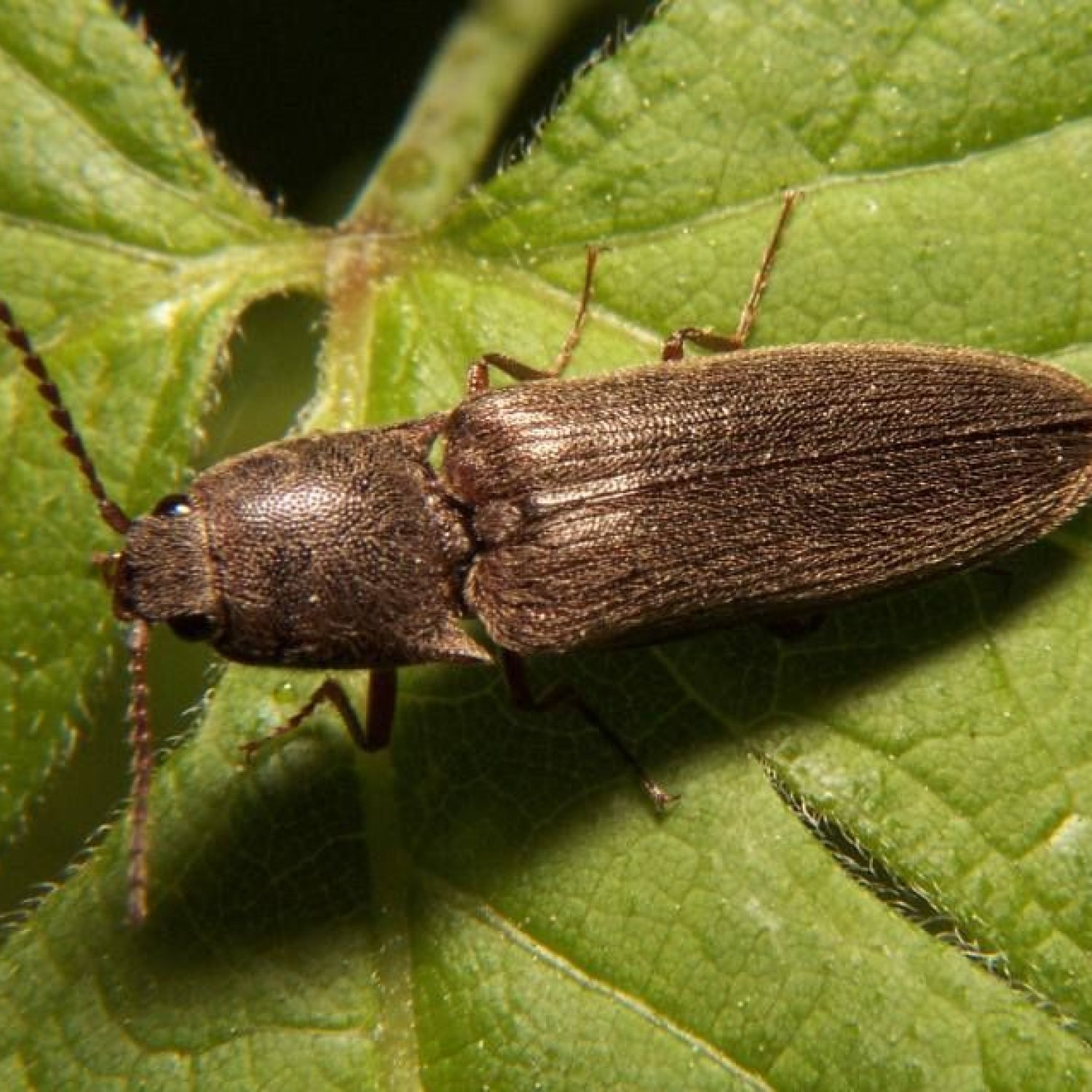
Click Beetle
10-45 mm
Click beetles are fascinating creatures that can be found in various locations around the world. With a slim and elongated body, a small flat head, and a length ranging from 10-45 mm, these bugs belong to the family Elateridae. Keep an eye out for these little guys as they can click and flip themselves back onto their feet when they are turned over. #clickbeetle #elateridae #insects #naturefacts
Animal Details Summary:
Common Name: Click Beetle
Kingdom: Animalia
Habitat: Various habitats including forests, fields, gardens, and wetlands
The Power and Mystery of the Click Beetle: Exploring the World of Elateridae
Nature is full of wonders and mysteries, and sometimes, the smallest creatures can have the most intriguing stories. One such creature is the Click Beetle, known for its unique ability to produce a clicking sound as a defense mechanism. But there is so much more to this creature than its audible defense tactics. Let's dive into the world of Elateridae, the scientific name for this fascinating insect, and uncover its secrets Click Beetle.From Kingdom Animalia to Order Coleoptera: Understanding the Taxonomy of the Click Beetle
The Click Beetle belongs to the kingdom Animalia, a diverse group of living organisms that includes both humans and animals. Within the animal kingdom, the Click Beetle belongs to the phylum Arthropoda, which consists of animals with segmented bodies, jointed limbs, and an exoskeleton.Moving further down the classification hierarchy, the Click Beetle is classified under the class Insecta, which includes the most diverse group of animals on earth. These insects are characterized by their three-part body structure, six legs, and a pair of antennae.
Within the class Insecta, the Click Beetle belongs to the order Coleoptera, which means "sheathed wing." This order is the largest in the animal kingdom, with over 400,000 known species. Beetles are recognized by their hardened forewings or elytra, which protect their delicate hindwings.
The Family Elateridae: Home to the Click Beetle
The Click Beetle is a member of the family Elateridae, which consists of over 10,000 species worldwide. These beetles are commonly known as click beetles or snapping beetles due to their unique defense mechanism Common Yellowthroat.One of the most distinctive features of Elateridae is their "clicking" ability. When threatened, they can flex their bodies and make a loud clicking sound, which can startle predators and help them escape. The source of this sound is the hinge-like structure between their head and thorax, which snaps into a notch on the abdomen, producing a clicking noise.
Habitat and Distribution of the Click Beetle
Unlike many other animals with a specific country of origin, the Click Beetle is found worldwide, making it a truly global insect. They are most commonly found in areas with a diverse range of habitats, including forests, fields, gardens, wetlands, and even urban areas.Click beetles have a remarkable ability to adapt to different environments, which is why they are found on every continent except Antarctica. They are particularly abundant in tropical and temperate regions of the world.
Feeding and Survival Strategies of the Click Beetle
The diet of the Click Beetle depends on its life stage. Larvae feed on plant roots and decaying organic matter, while adults primarily feed on nectar and pollen. However, they have also been known to feed on small insects and snails.In their early stages, Click Beetle larvae are known as wireworms, and they can be quite destructive to crops. However, they play a crucial role in the ecosystem by breaking down decaying matter and enriching the soil. Adult Click Beetles, on the other hand, play a vital role as pollinators, which is essential for the survival of many plant and animal species.
Aside from their unique clicking ability, Click Beetles have other strategies for survival. Their coloration is mostly black or dark brown, which helps them camouflage with their surroundings and avoid predators. Some species also have the ability to detach their legs when threatened, which may distract predators and allow the beetles to escape.
Anatomy of the Click Beetle: What Makes it Stand Out from Other Insects
The Click Beetle has a slim and elongated body, with a small and flat head. It can range in length from 10 to 45mm, with some tropical species reaching up to 90mm.One of the most distinct features of the Click Beetle is its prosternal spine, located on its underside. This spine acts as a lock, keeping the beetle's head and thorax in place, allowing it to perform its clicking feat.
Another interesting aspect of the Click Beetle's anatomy is its flexible exoskeleton. This flexibility allows it to twist and turn into different positions, making it challenging for predators to catch.
The Role of Click Beetles in Human Life and the Environment
Like many insects, Click Beetles play a significant role in the ecosystem. They help to break down organic matter, which releases vital nutrients back into the soil. Additionally, as pollinators, they help to ensure the healthy growth and reproduction of many plant species.However, some Click Beetle species can be harmful to crops and plants. Their wireworm larvae can cause substantial damage to agricultural crops, leading to economic losses for farmers. As such, they are considered pests in some parts of the world, and efforts are being made to control their populations.
The Future of the Click Beetle: Conservation Efforts and Threats
Despite being widespread, the Click Beetle, like many other insect species, is facing numerous threats. Habitat destruction and pesticide use are some of the major factors responsible for the decline in their population. Climate change is also a significant concern, as it can disrupt the balance of their ecosystems.Conservation efforts for the Click Beetle are still in their early stages, but some organizations have made strides in protecting and preserving their habitats. These efforts are vital in ensuring the survival of this incredibly diverse and remarkable insect species.
Conclusion: Awe-inspiring Adaptability and Survival Tactics of the Click Beetle
The Click Beetle may seem like a tiny and insignificant creature, but it has captured the attention of scientists and nature enthusiasts worldwide. Its unique clicking ability and remarkable adaptations make it a truly fascinating insect to study and admire.From its taxonomy to its anatomy and feeding habits, every aspect of the Click Beetle showcases its incredible adaptability and survival strategies. While there are still many mysteries surrounding this creature, further research and conservation efforts will undoubtedly shed more light on its significance in the natural world.

Click Beetle
Animal Details Click Beetle - Scientific Name: Elateridae
- Category: Animals C
- Scientific Name: Elateridae
- Common Name: Click Beetle
- Kingdom: Animalia
- Phylum: Arthropoda
- Class: Insecta
- Order: Coleoptera
- Family: Elateridae
- Habitat: Various habitats including forests, fields, gardens, and wetlands
- Feeding Method: Larvae feed on plant roots and decaying organic matter, adults feed on nectar and pollen
- Geographical Distribution: Found worldwide
- Country of Origin: No specific country of origin
- Location: Various locations around the world
- Animal Coloration: Black or dark brown
- Body Shape: Slim and elongated body with a small, flat head
- Length: 10-45 mm
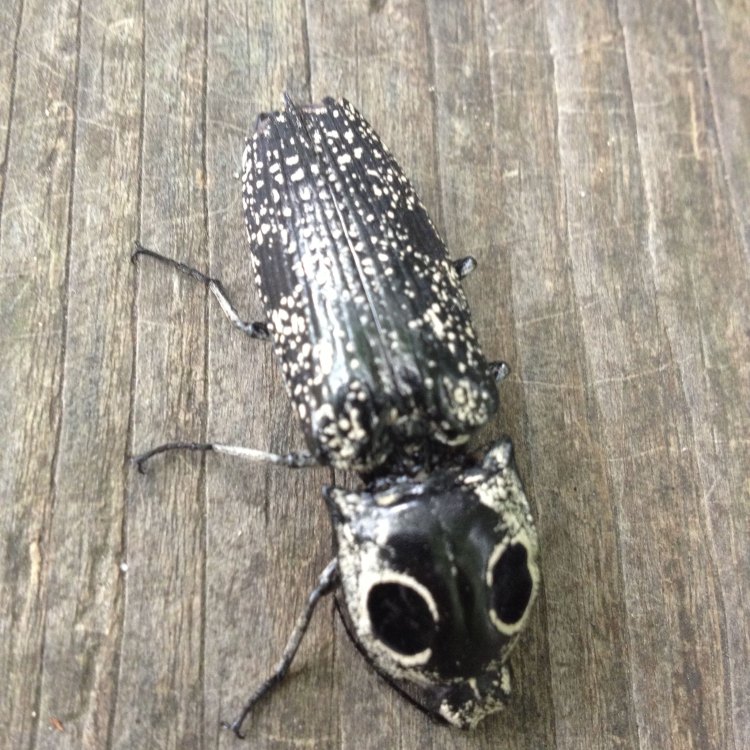
Click Beetle
- Adult Size: Adults range from 10-45 mm in length
- Average Lifespan: 2-3 years
- Reproduction: Sexual reproduction
- Reproductive Behavior: Mating occurs during the warm months; females lay eggs in soil or rotting wood
- Sound or Call: Produce a distinctive clicking sound when they flip themselves upright
- Migration Pattern: Non-migratory
- Social Groups: Solitary
- Behavior: Click beetles have the ability to flip themselves upright using a specialized mechanism, they are primarily active at night
- Threats: Habitat loss, pesticide use
- Conservation Status: Not evaluated
- Impact on Ecosystem: Click beetles play a role in the decomposition of organic matter
- Human Use: None
- Distinctive Features: Ability to click and flip themselves upright
- Interesting Facts: Click beetles are one of the largest families of beetles, with over 9,500 species worldwide
- Predator: Various insectivorous animals
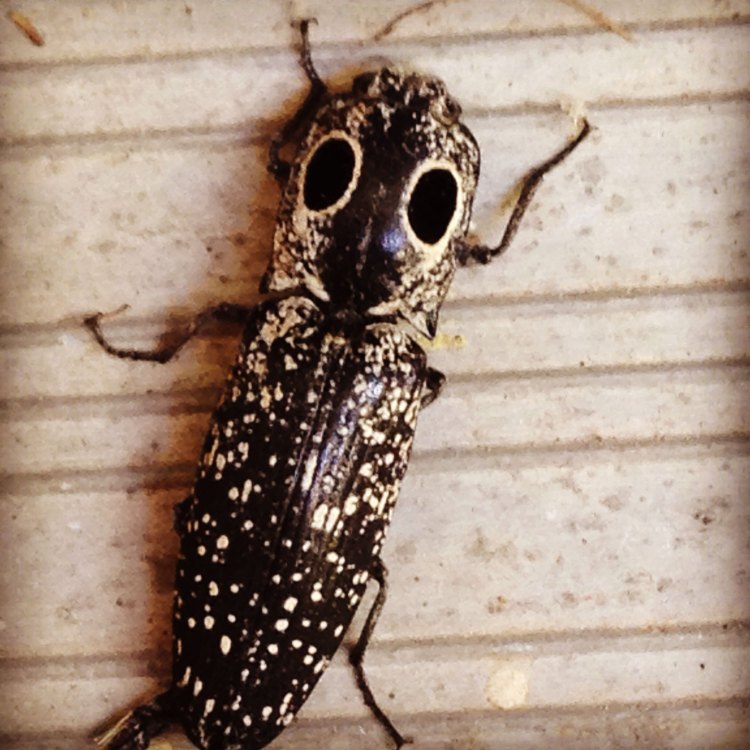
Elateridae
The Fascinating World of Click Beetles
When one thinks of beetles, the image of small, scurrying insects may come to mind. However, there is one group of beetles that stands out from the rest – the click beetles. These fascinating creatures have captured the curiosity of entomologists and nature enthusiasts alike with their unique abilities and behaviors. In this article, we will delve into the intriguing world of click beetles and discover the wonders they hold PeaceOfAnimals.Com.First discovered in 1758 by the Swedish taxonomist Carl Linnaeus, click beetles belong to the family Elateridae, which is one of the largest families of beetles with over 9,500 species worldwide. They are found in various habitats, including forests, grasslands, and even urban areas. Click beetles have a diverse range of colors and patterns, making them both visually appealing and hard to spot in the wild.
The most interesting feature of click beetles is their ability to click and flip themselves upright. This unique mechanism is what gives these beetles their name. When disturbed or placed on their backs, click beetles can generate enough force to propel themselves several inches into the air, producing a distinct clicking sound. This movement is known as "auditory reflex," and it helps them escape from potential predators. This quality makes click beetles a true marvel of nature and has fascinated scientists for centuries.
Now, let's dive deeper into the world of click beetles and discover more about their physical characteristics, behaviors, and impact on the ecosystem Congo Snake.
Size and Lifespan
Click beetles vary in size, with adults ranging from 10 to 45 mm in length. The larger species can be easily spotted in the wild, while smaller ones may be harder to detect due to their size. As with most insects, the size of click beetles varies between males and females, with females being slightly larger. The larvae of click beetles, known as wireworms, can grow up to 35 mm in length and are typically found in soil or rotting wood.On average, click beetles have a lifespan of 2-3 years. This lifespan may seem short to us, but it is quite long for an insect. During their lifetime, click beetles go through a complete metamorphosis – from egg to larva to pupa to adult. This process can range from a few weeks to a few months, depending on the species and environmental conditions.
Reproduction and Behavior
Click beetles reproduce sexually, with males and females coming together during the warm months for mating. Mating behaviors vary among different species, with some beetles performing intricate courtship rituals before mating. Once the female has been fertilized, she will lay her eggs in the soil or rotting wood, providing a safe and nutritious environment for the developing larvae.Click beetles are primarily active at night, and during the day, they can be found hiding in leaf litter, under rocks, or in crevices. They are not social insects and are solitary creatures, coming together only during mating season.
One of the most interesting behaviors of click beetles is their ability to flip themselves upright using a specialized mechanism. This mechanism is possible due to a hinge-like structure called the prosternum, located on the underside of the thorax. When the beetle is on its back, it contracts its pronotal muscles, pushing the prosternum against the substrate, and with a loud click, it propels itself into the air, thereby flipping itself upright. This movement happens so quickly that it is almost impossible to see with the naked eye.
Threats and Conservation Status
As with many other species, click beetles face threats from habitat loss and pesticide use. With urbanization and deforestation on the rise, the natural habitats of click beetles are shrinking, leaving them with fewer places to live and reproduce. Additionally, the use of pesticides in agriculture and gardens can have a detrimental impact on not only click beetles but also other insects and wildlife.However, since click beetles have a wide distribution and a stable population, their conservation status has not been evaluated. Nevertheless, it is essential to ensure that their habitats are preserved and that pesticide use is regulated to maintain the balance of the ecosystem.
Impact on the Ecosystem
Click beetles play a crucial role in the ecosystem. As larvae, they feed on the decomposing organic matter, contributing to the process of decomposition. This function helps to recycle nutrients in the soil, making them available to other plants and animals. As adults, they also act as pollinators, aiding in the reproduction of plants. Furthermore, click beetles serve as a food source for various insectivorous animals, thus playing a crucial role in the food chain.Interesting Facts
Apart from their unique clicking and flipping abilities, click beetles have many other interesting qualities and behaviors. Here are some fun facts about these fascinating insects:1. Click beetles are known by various names in different parts of the world, such as elaters, skipjacks, spring beetles, and snapping beetles.
2. The clicking sound produced by click beetles is one of the loudest noises produced by any insect, reaching up to 100 decibels.
3. Some species of click beetles are bioluminescent, producing a soft green light. This light is used for communication and attracting mates.
4. The larvae of click beetles, also known as wireworms, are considered pests in the agricultural industry as they feed on the roots of crops, causing damage.
Predators
Like most insects, click beetles have various predators, both in their larval and adult stages. Various insectivorous animals, such as birds, rodents, and reptiles, feed on click beetles. Additionally, parasitic wasps lay their eggs on click beetles, and the hatched larvae feed on them, ultimately leading to their death.In Conclusion
In conclusion, click beetles are truly remarkable creatures, possessing unique abilities and behaviors that have captivated the interest of scientists and nature enthusiasts for centuries. From their ability to click and flip themselves upright to their important role in the ecosystem, click beetles are essential to the balance of nature. However, as with any other species, it is crucial to preserve their habitats and regulate the use of pesticides to ensure that these fascinating insects continue to thrive for generations to come. So, the next time you come across a click beetle, take a moment to appreciate its distinctive features and remember that it is an integral part of our ecosystem.
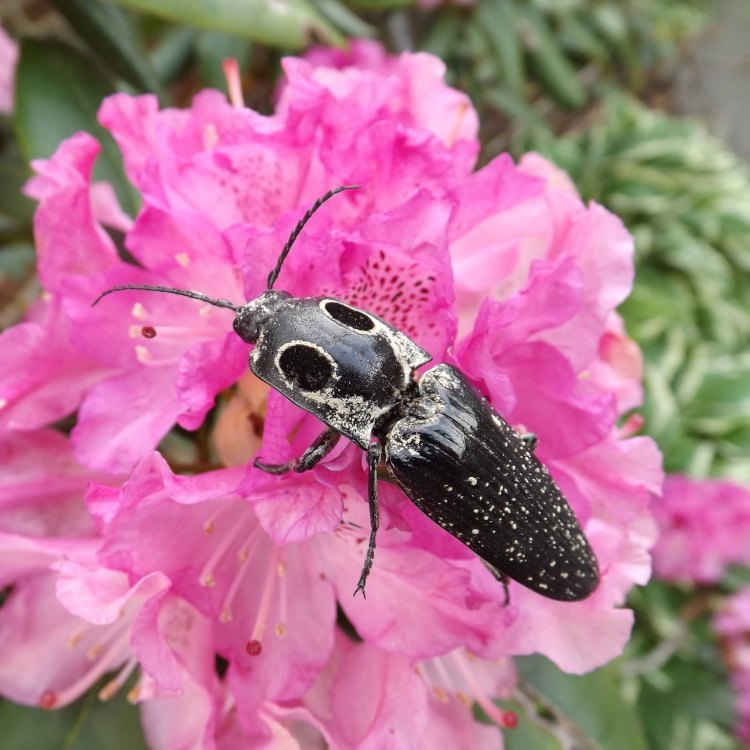
The Power and Mystery of the Click Beetle: Exploring the World of Elateridae
Disclaimer: The content provided is for informational purposes only. We cannot guarantee the accuracy of the information on this page 100%. All information provided here may change without prior notice.



